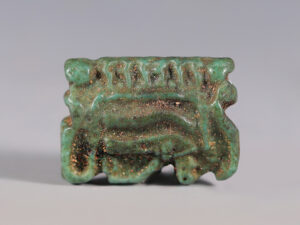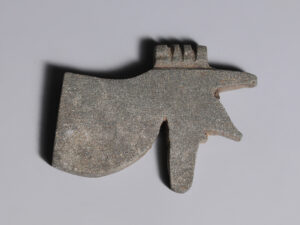The wedjat, as the Eye of Horus, is one of the most popular amulets of ancient Egypt. The amulet combines elements of both human and falcon ocular imagery, with the god Horus often depicted as a falcon. Its name comes from the ancient Egyptian ‘wḏꜣt’, meaning “the one that is complete”. The wedjat was highly apotropaic and associated with a number of Egyptian myths. The eye depicted could be either left or right, representing different imagery. Horus’ left eye was the sun and the right eye was considered the moon. In one creation myth, Horus’ eye was injured or stolen by the god Seth and then restored by Thoth. Hence, the wedjat eye was thought to possess healing powers and symbolise regeneration. In another myth, Horus presents his healed eye to his father Osiris, to help him pass safely into his afterlife. As such, wedjat eye amulets were commonly placed within mummy wrappings to help the dead pass safely into the afterlife.
Thutmosis III meaning “Thoth is born” was a New Kingdom, Dynasty 18, pharaoh from 1479-1425 BC. He ascended the throne at 2 years old and was co-regent with his aunt, Hatsheput, for the first 22 years of his reign. Following many successful military campaigns, Thutmosis III expanded the Egyptian empire to its largest extent.. Thutmosis III’s reign also saw some significant developments in the arts including new forms in monument and sculpture. Not all amulets bearing a royal name are contemporaneous to the ruling pharaoh. Some kings were held in particularly high regard, and thus their name appears on scarabs hundreds of years after their reign. Thutmosis III of Dynasty XVIII was particularly honoured in this way, with his praenomen, Men-Kheper-Re, used on amulets and scarabs for a period of around 1000 years.
To find out more about Ancient Egyptian amulets please see our relevant blog post: Egyptian Amulets and their Meanings: Ancient Egyptian Gods.






















